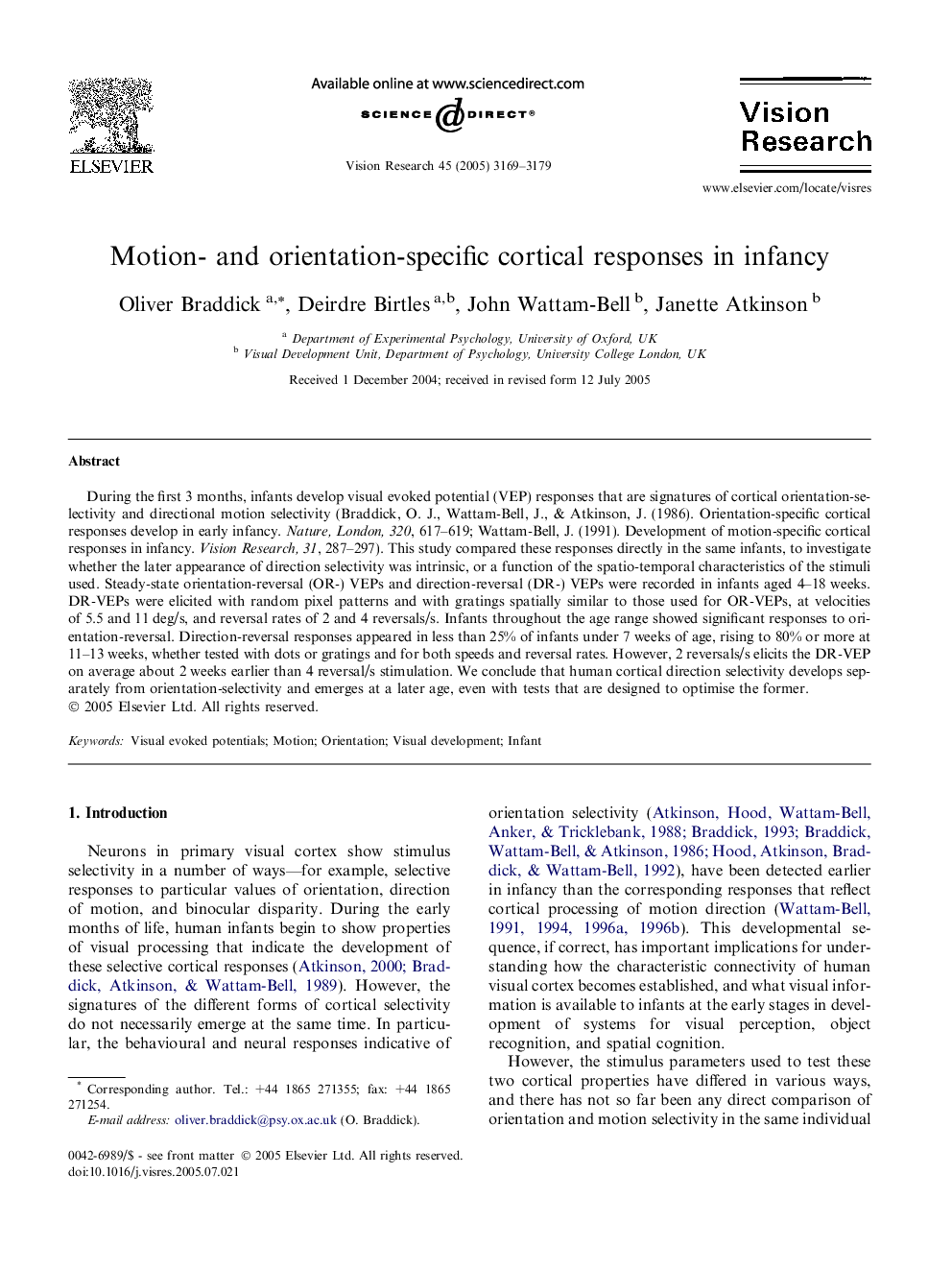| کد مقاله | کد نشریه | سال انتشار | مقاله انگلیسی | نسخه تمام متن |
|---|---|---|---|---|
| 4035944 | 1603248 | 2005 | 11 صفحه PDF | دانلود رایگان |

During the first 3 months, infants develop visual evoked potential (VEP) responses that are signatures of cortical orientation-selectivity and directional motion selectivity (Braddick, O. J., Wattam-Bell, J., & Atkinson, J. (1986). Orientation-specific cortical responses develop in early infancy. Nature, London, 320, 617–619; Wattam-Bell, J. (1991). Development of motion-specific cortical responses in infancy. Vision Research, 31, 287–297). This study compared these responses directly in the same infants, to investigate whether the later appearance of direction selectivity was intrinsic, or a function of the spatio-temporal characteristics of the stimuli used. Steady-state orientation-reversal (OR-) VEPs and direction-reversal (DR-) VEPs were recorded in infants aged 4–18 weeks. DR-VEPs were elicited with random pixel patterns and with gratings spatially similar to those used for OR-VEPs, at velocities of 5.5 and 11 deg/s, and reversal rates of 2 and 4 reversals/s. Infants throughout the age range showed significant responses to orientation-reversal. Direction-reversal responses appeared in less than 25% of infants under 7 weeks of age, rising to 80% or more at 11–13 weeks, whether tested with dots or gratings and for both speeds and reversal rates. However, 2 reversals/s elicits the DR-VEP on average about 2 weeks earlier than 4 reversal/s stimulation. We conclude that human cortical direction selectivity develops separately from orientation-selectivity and emerges at a later age, even with tests that are designed to optimise the former.
Journal: Vision Research - Volume 45, Issues 25–26, November 2005, Pages 3169–3179